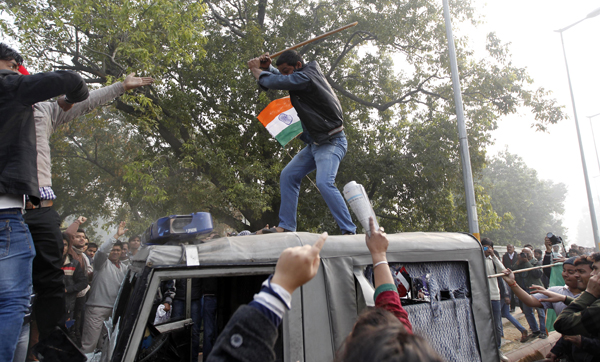
New Delhi, December 25: The Delhi Police constable, Subhash Tomar, who was injured in the Sunday's clashes has died at the Ram Manohar Lohia Hospital in Delhi on Tuesday morning. The constable was injured after the protests at India Gate turned violent and the police lathicharged protesters. Some protesters also reportedly pelted stones at policemen.
The police have registered a case in this regard. The police say they have a video clip of the men who injured the constable and the case will be treated as a murder case.
Subhash Tomar, posted at Karawal Nagar police station, was deployed on Law and Order duty, and was rushed to the hospital after being injured and was put on ventilator support. The 46-year-old constable belonged to Meerut.
During the clashes at the protests at India gate on Sunday, over 140 people were injured. Delhi Police Commissioner Neeraj Kumar had said that at least 65 Delhi Police officials were injured in the clashes with protesters.
Police used brute force to clear India Gate on Sunday evening after intermittent clashes with them. The crackdown came after some protesters started to indulge in violence, pulled down and burnt several barricades.
Many of the protesters claimed their demonstration was peaceful and accused the police of using unnecessary force. The gangrape survivor also continues be in a critical condition in Delhi's Safdarjung Hospital.
According to police, they had to use around 250 tear gas shells and repeated baton charges to evacuate protesters from the India Gate area. "Hooligans among the protestors resorted stone pelting. Around 12 DTC buses and equal number of PCR vans were damaged in the day long incident. One vehicle of Delhi Doordarshan was also damaged by the hooligans," said police.





Comments
Add new comment